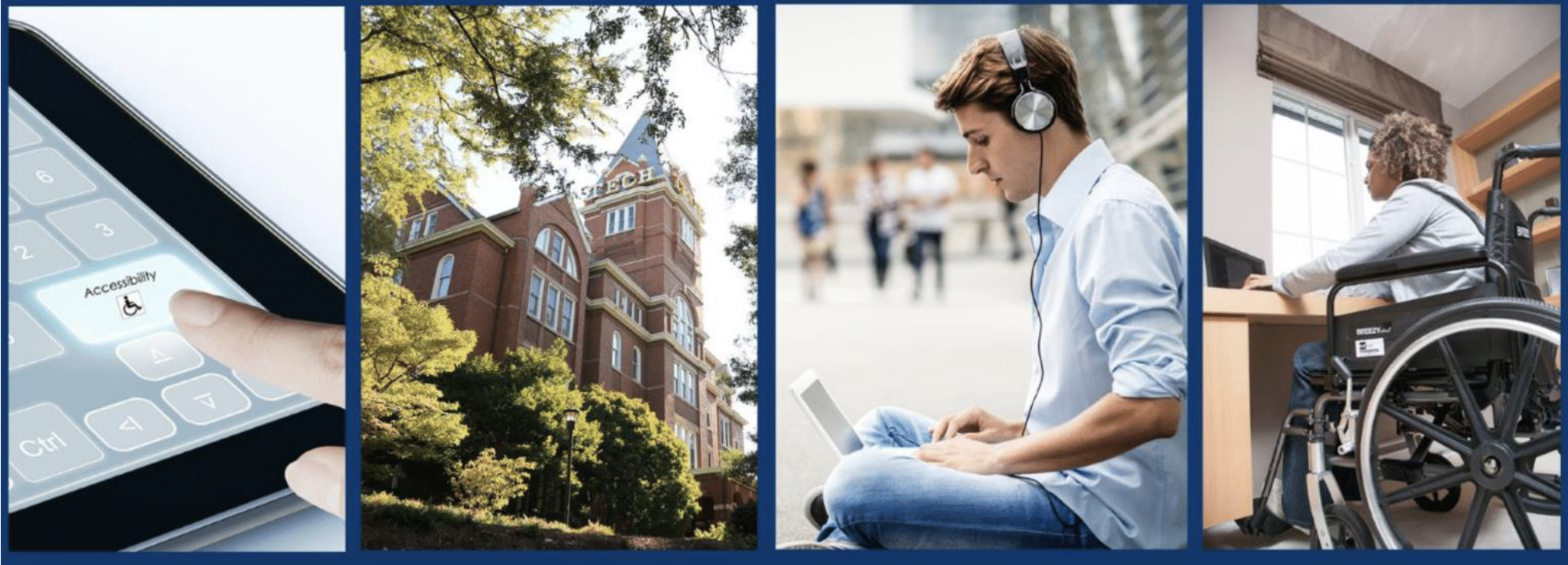Toward Accessibility and Inclusion: The ADA Turns 31

The Americans With Disabilities Act (ADA) was signed into law 31 years ago today.
“It’s the biggest commitment that we’ve made in our country to people with disabilities,” said Denise Johnson Marshall, Georgia Tech’s ADA compliance coordinator for Equity and Compliance Programs within Institute Diversity, Equity, and Inclusion (IDEI).
The Americans With Disabilities Act (ADA) was signed into law 31 years ago today. The culmination of decades of advocacy, activism, and demands for equal treatment and full citizenship, the ADA codified protections against discrimination in employment, public services and accommodations, transportation, and telecommunications.
It also laid the groundwork for later efforts — that continue to this day — to transform infrastructure, policies, and technology, placing accessibility at the forefront rather than a retrofitted afterthought. It has helped to change the way people think about equity, access, and usability in our built environment and our daily lives.
“It speaks to inclusion on a larger scale, and it’s very strong civil rights legislation,” Johnson Marshall said. “Not only is it an anti-discriminatory act, but it also established measurable standards.”
She began working at Georgia Tech in 2002 as assistant dean of students and director of disability services and became the Institute’s first full-time ADA compliance coordinator in 2016. “I’ve been able to see a lot of changes at Tech during the 19 years I’ve been here,” she said.
In her current role, she helps to make sure the Institute complies with the ADA and other disability-related laws in higher education, through policy development, equity and grievance processes, and ADA transition planning. Tech, like all higher ed institutions, is required to have a plan to ensure that its campus is accessible, including physical accessibility and also programmatic and service accessibility. That plan needs to be updated on a regular basis. “Our last update was in 2016,” Johnson Marshall said. “Since then, we have created a transition plan, where we work on the items that were part of that assessment of our entire campus.”
The position originated within the general counsel’s office in Legal Affairs and recently moved to IDEI. “Compliance, and everything that the ADA stands for, was meant to give minimum standards and minimum guidance,” she said. “But in order for a person to actually participate in your campus environment, you need to go beyond the minimum, and to ensure that compliance is equitable to everyone involved.”
It’s also important, in her view, to “understand an inclusive culture that includes disability and to understand what our community looks like. Our community is not made up of just one type of person, and we need to really commit to that.”
The newest assistant dean and director of disability services is Anne Jannarone, who came to Tech in 2019 with more than 20 years in the field. From the outset, she appreciated what she saw as the Institute’s commitment to supporting students and employees with disabilities.
“It was impressive,” she said. “I liked the idea of being in a big city and talking about accessibility not just on campus but in the midst of the larger Atlanta community.”
Georgia Tech’s Office of Disability Services focuses on finding solutions and implementing accommodations for individuals with disabilities who face physical, technological, academic, or other barriers on campus. Jannarone takes to heart her team’s responsibility for “determining reasonable accommodations for all the possible scenarios a student with a disability can face.” These land most frequently on the academic side — accommodations related to exams and note-taking, for example. Some students have sensory disabilities, so the office provides alternative formats, interpreters, and real-time captioning, among other services.
For Jannarone, one of the most significant effects of the ADA was to expand the reach of legal protection beyond what had been established by the Rehabilitation Act of 1973, Section 504, which applied only to public institutions that received federal funding. By including private places of public accommodation, the ADA demonstrated that, for the first time on a national level, “the breadth of experiences of people with disabilities was being thought about.”
Both Jannarone and Johnson Marshall agree that enormous changes have taken place, in part because of the ADA, and that much work remains to be done. They also note some important shifts occuring as a result of the pandemic, which got people thinking differently — and some for the first time — about disabilities and technology. It allowed faculty and staff to explore new, virtual models of teaching and working outside of traditional classrooms and offices, models that can provide greater accessibility and usability for people with disabilities.
Awareness is also increasing as a result of the efforts of individuals and units across Georgia Tech — including the Center for Inclusive Design and Innovation, the Office of Information Technology, and the Diversity and Inclusion Fellows Program, which helped launch ABLE Alliance in 2019. Made up of Tech faculty, staff, and students, ABLE Alliance works to improve accessibility and inclusion on campus, as well as providing support, resources, networking, and professional development opportunities.
“Once we realize who is actually in our community or our culture, I think we’ll have a better understanding of designing things for all people to use,” Johnson Marshall said. “We’re getting there.”